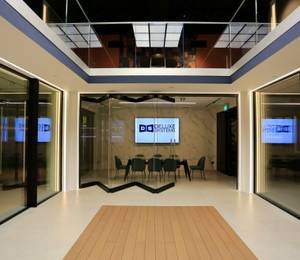For the past 47 years, the TL Robertson Library at Curtin University in Perth, Australia has stood as an iconic brutalist structure that welcomes two million visits annually by students, faculty and the greater Perth community. Danish architectural firm Schmidt Hammer Lassen Architects, together with Australia-based Hames Sharley, is leading the redevelopment of the library that will modernise the building, making it more than just a storehouse of books.
The library, built in 1972, was originally designed with little natural daylight in order to protect the thousands of books and other physical materials in its collection. Schmidt Hammer Lassen aims to create a “living library” by opening up new pathways for visual and physical connectivity throughout the building site, while bringing natural light into the space. The new open, light-filled scheme will support knowledge sharing and connection, and ensure the library meets the needs of future users.
Parks, green spaces, and tree-lined walkways characterise the scenic Curtin University campus. The TL Robertson Library is centrally located on the campus, making it a natural focal point and a historic landmark for students and faculty. The architectural design invites the landscape in, with the use of timber and other natural materials. Vertical lines and elongated windows provide views to the tall trees in the adjacent park. A clean palette of lightweight materials supporting a bold architectural expression will add a light, crisp contrast to the existing concrete and brick structure.
The redevelopment of exterior spaces will better connect the entrances to the public realm. Henderson Court, a green space on the south side of the building, will see physical barriers removed and a gradual grading of the landscape in order to create a more direct link to the south entrance. Inside the library, a new atrium will create a strong connection between the second and third levels, both of which reach out to the landscape. A makerspace, an event location, and new flexible teaching spaces will flank a grand staircase with built-in seating.












